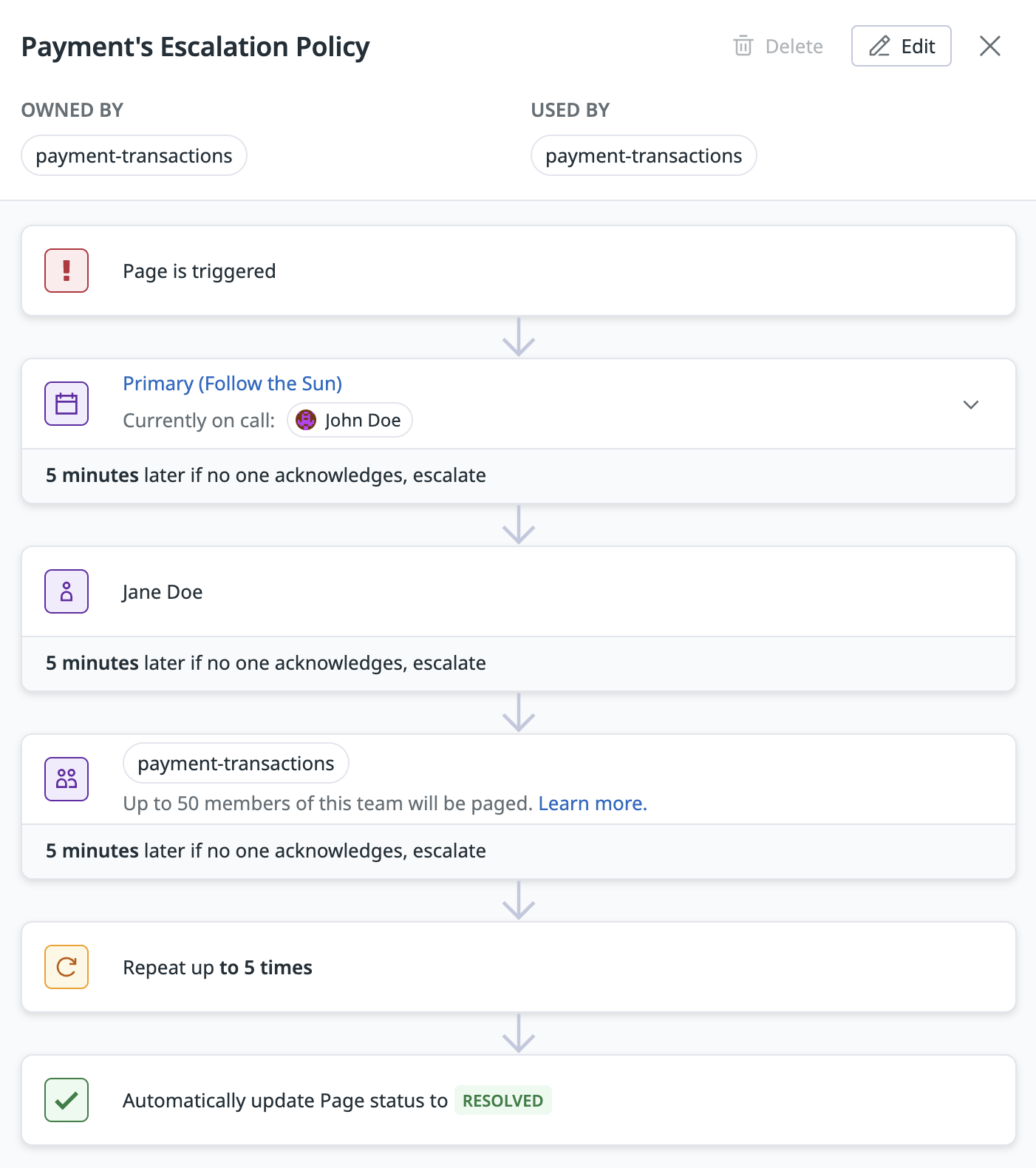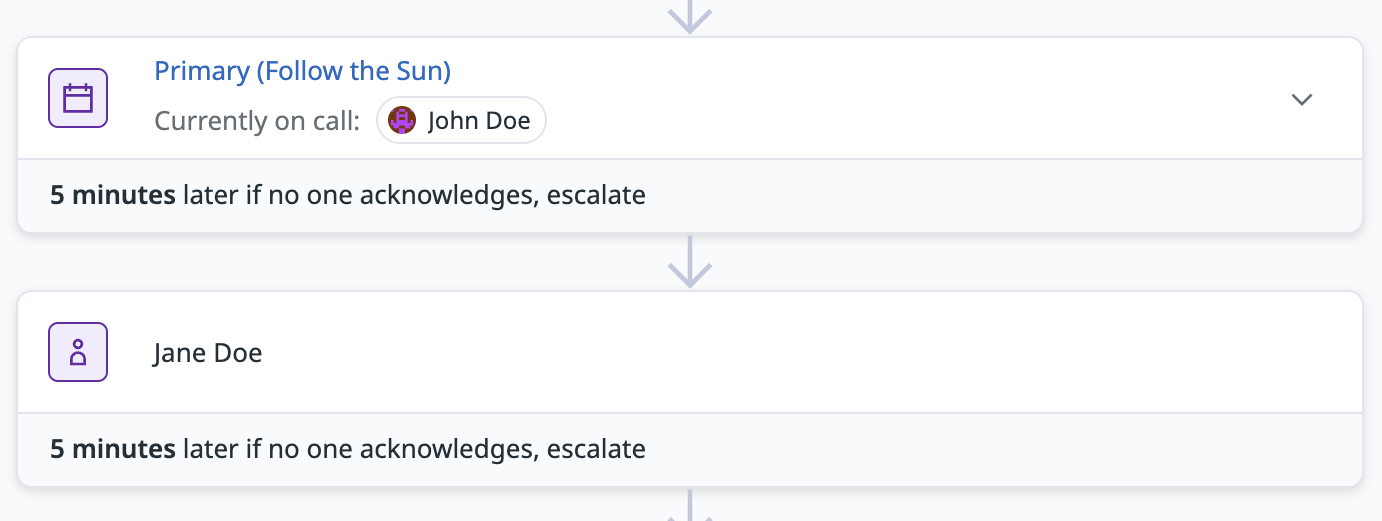- Essentials
- Getting Started
- Agent
- API
- APM Tracing
- Containers
- Dashboards
- Database Monitoring
- Datadog
- Datadog Site
- DevSecOps
- Incident Management
- Integrations
- Logs
- Monitors
- OpenTelemetry
- Profiler
- Session Replay
- Security
- Serverless for AWS Lambda
- Software Catalog
- Software Delivery
- Synthetic Monitoring and Testing
- Tags
- Workflow Automation
- Learning Center
- Support
- Glossary
- Standard Attributes
- Guides
- Agent
- Integrations
- Developers
- Authorization
- DogStatsD
- Custom Checks
- Integrations
- Create an Agent-based Integration
- Create an API Integration
- Create a Log Pipeline
- Integration Assets Reference
- Build a Marketplace Offering
- Create a Tile
- Create an Integration Dashboard
- Create a Monitor Template
- Create a Cloud SIEM Detection Rule
- OAuth for Integrations
- Install Agent Integration Developer Tool
- Service Checks
- IDE Plugins
- Community
- Guides
- OpenTelemetry
- Administrator's Guide
- API
- Partners
- Datadog Mobile App
- DDSQL Reference
- CoScreen
- CoTerm
- Cloudcraft (Standalone)
- In The App
- Dashboards
- Notebooks
- DDSQL Editor
- Reference Tables
- Sheets
- Monitors and Alerting
- Metrics
- Watchdog
- Bits AI
- Internal Developer Portal
- Error Tracking
- Change Tracking
- Service Management
- Actions & Remediations
- Infrastructure
- Cloudcraft
- Resource Catalog
- Universal Service Monitoring
- Hosts
- Containers
- Processes
- Serverless
- Network Monitoring
- Cloud Cost
- Application Performance
- APM
- APM Terms and Concepts
- Application Instrumentation
- APM Metrics Collection
- Trace Pipeline Configuration
- Correlate Traces with Other Telemetry
- Trace Explorer
- Recommendations
- Code Origins for Spans
- Service Observability
- Endpoint Observability
- Dynamic Instrumentation
- Live Debugger
- Error Tracking
- Data Security
- Guides
- Troubleshooting
- Continuous Profiler
- Database Monitoring
- Agent Integration Overhead
- Setup Architectures
- Setting Up Postgres
- Setting Up MySQL
- Setting Up SQL Server
- Setting Up Oracle
- Setting Up Amazon DocumentDB
- Setting Up MongoDB
- Connecting DBM and Traces
- Data Collected
- Exploring Database Hosts
- Exploring Query Metrics
- Exploring Query Samples
- Exploring Database Schemas
- Exploring Recommendations
- Troubleshooting
- Guides
- Data Streams Monitoring
- Data Jobs Monitoring
- Data Observability
- Digital Experience
- Real User Monitoring
- Synthetic Testing and Monitoring
- Continuous Testing
- Product Analytics
- Software Delivery
- CI Visibility
- CD Visibility
- Deployment Gates
- Test Optimization
- Quality Gates
- DORA Metrics
- Security
- Security Overview
- Cloud SIEM
- Code Security
- Cloud Security
- App and API Protection
- Workload Protection
- Sensitive Data Scanner
- AI Observability
- Log Management
- Observability Pipelines
- Log Management
- Administration
Escalation Policies
This product is not supported for your selected Datadog site. ().
In Datadog On-Call, escalation policies ensure that Pages are promptly addressed. Pages are escalated through predefined steps, unless acknowledged within set timeframes.
Datadog creates a default escalation policy when you onboard a Team to On-Call.
Create a new escalation policy
- Go to On-Call > Escalation Policies.
- Select + New Escalation Policy.
- Enter a Name for your escalation policy. For example, Payment’s Escalation Policy.
- Select the Teams that own this escalation policy.
- For each escalation step:
1. Decide who should be notified. You can specify individual users, teams, or whoever is on-call in a schedule.
1. Select one of the following notification methods:
Notify All,Round Robin. See Escalation policy notification types for details. 1. Specify how many minutes the recipient has to acknowledge the page before it is escalated to the next tier. For example, the following will notify the current on-call user when a page is triggered. It will escalate to Jane Doe if John does not acknowledge the page within 5 minutes. - Set how many times to repeat the steps if no one acknowledges the page.
- Select whether Datadog should automatically update the page status to Resolved after executing all rules and repeats.
Escalation policy step notification types
In each step of an escalation policy, you can keep the standard Notify All behavior or opt-in for Round Robin.
Notify all (default)
Notify all targets of the step at the same time.
For example, if a step includes an individual user, a team with three members, and a schedule, then five people will be notified: the individual user, each of the three team members, and the on-call user from the schedule.
Round robin
Automatically distribute pages across multiple targets (users, schedules, teams) in a rotating order to ensure fair load balancing.
For example, if you have a 50-person support team, you can break up the team into five 10-person schedules and set up the following policy to evenly distribute load:
- Page A → Support Schedule Group 1
- Page B → Support Schedule Group 2
- Page C → Support Schedule Group 3
- Page D → Support Schedule Group 4
- Page E → Support Schedule Group 5
- Page F → Support Schedule Group 1
- Page G → Support Schedule Group 2
Escalation behavior
In round robin mode, if a page isn’t acknowledged in time, it doesn’t move to the next person in the round robin rotation. Instead, it escalates to the next step in the policy.
If you want the page to go to the next target in the round robin, use only one round robin step in your escalation policy and configure it to repeat at least as many times as there are targets.
Escalation policy step targets
In each step of an escalation policy, you can notify individual users, entire teams, or whoever is on-call in a schedule.
Schedules
Escalation policies can notify whoever is on-call according to a predefined schedule. The system checks the schedule and notifies the person or group that is actively on-call during the incident. Using schedules is beneficial for:
- Routing alerts to on-call responders across different time zones for 24/7 coverage.
- Handling tiered support, where different shifts handle different levels of urgency.
- Dynamic notifications for teams with rotating on-call responsibilities, ensuring the right person is always paged.
If no one is on-call for a given schedule, the escalation step gracefully skips and the process moves forward without delays or interruptions. The UI indicates a skipped escalation.
Users
You can include specific users in an escalation policy to ensure key individuals are always notified in the event of a Page. Common use cases for directly paging a user are:
- Notifying a senior engineer for high-severity incidents requiring specialized knowledge.
- Alerting a product manager or director in case of customer-facing incidents.
- Routing alerts to a backup responder if the primary contact is unavailable.
Teams
Common use cases for paging an entire Team are:
- Incidents affecting multiple systems where various team members may contribute to the solution.
- Escalating to a DevOps team for infrastructure-related incidents.
- Ensuring that all relevant members of an engineering or security team are alerted for critical outages.
Limitations
- Maximum escalation steps: 10
- Maximum number of notify targets (individuals, teams, or schedules) per escalation step: 10
- Minimum time before escalation to the next step: one minute







